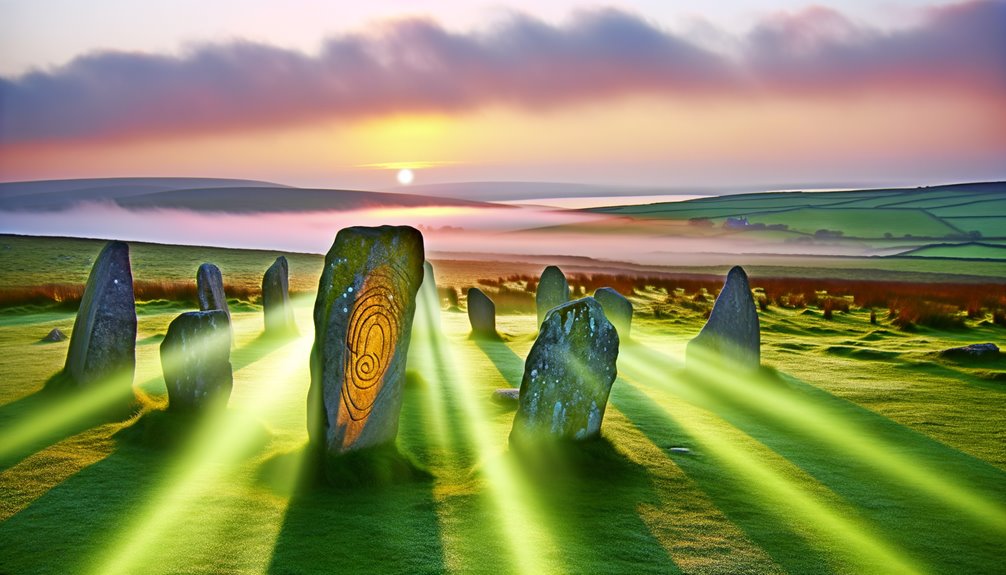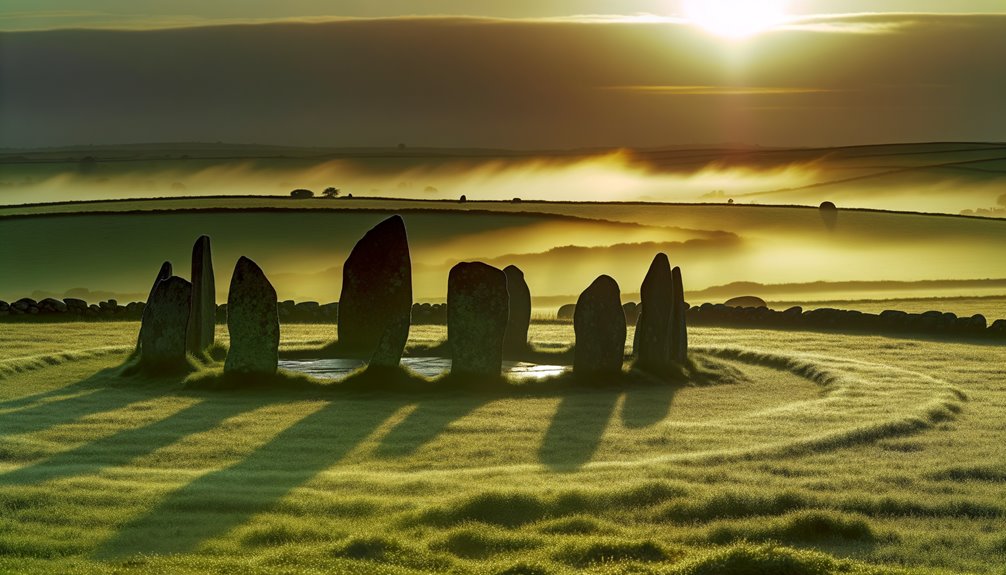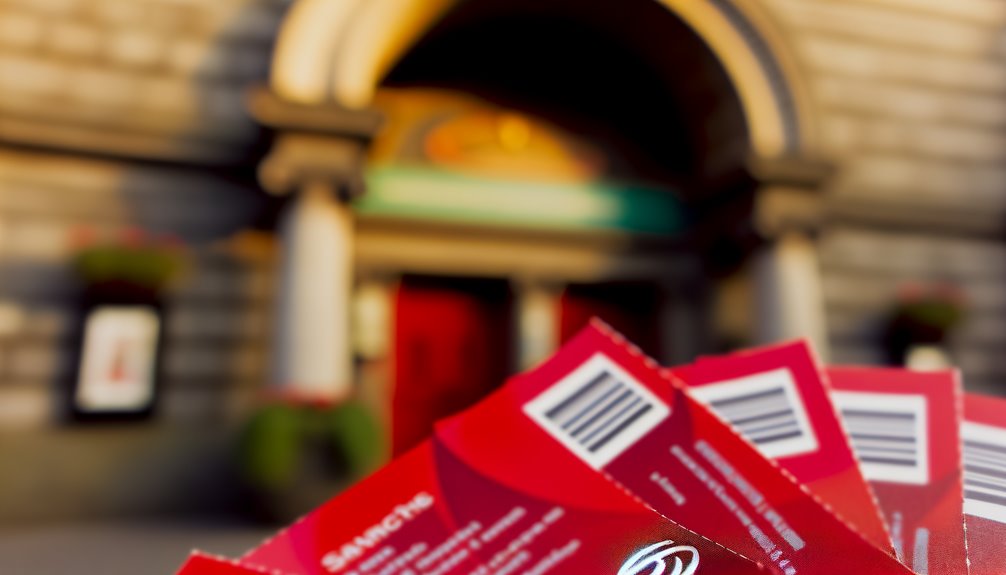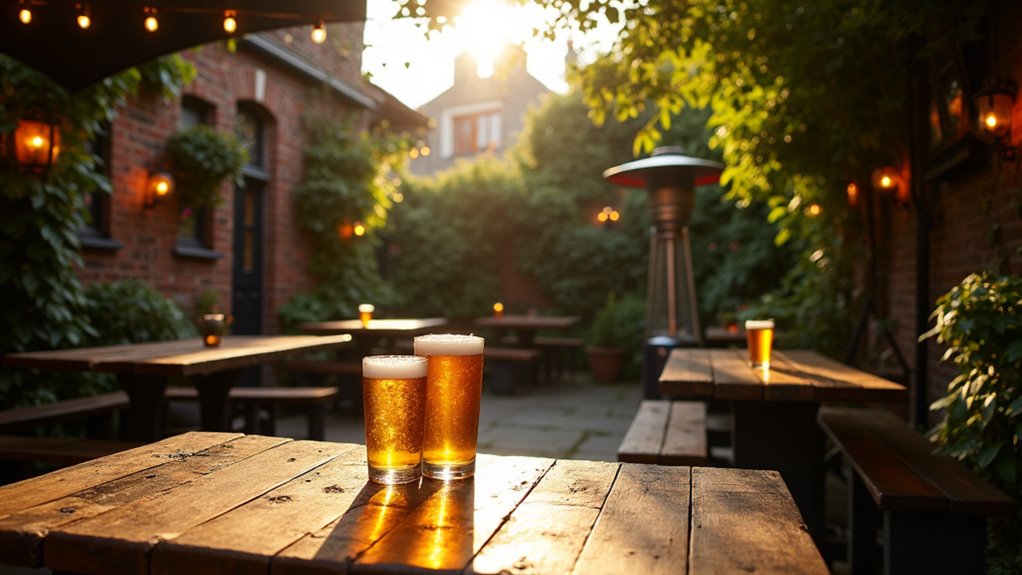Ancient Irish legends unfold across four distinct cycles—Mythological, Ulster, Fenian, and Historical—each brimming with supernatural beings, heroic figures, and moral dilemmas. The Tuatha Dé Danann's magic, Cú Chulainn's battle frenzy, Fionn mac Cumhaill's wisdom from the Salmon of Knowledge—these narratives survived through oral tradition before monks preserved them in writing. Beneath their fantastical surfaces, these tales reveal ancient Ireland's values, explaining natural phenomena while strengthening cultural identity. The ancient mist still parts for curious minds.

Long before Christianity cast its shadow across the emerald landscapes of Ireland, a rich tapestry of myths and legends took shape among its people—stories that would endure through millennia of cultural change. These narratives, preserved initially through oral tradition and later transcribed by monks in works like the Book of Invasions and the Yellow Book of Lecan, form four distinct cycles: Mythological, Ulster, Fenian, and Historical.
The Mythological Cycle unravels the pseudo-history of Ireland's supernatural settlers, most significantly the Tuatha Dé Danann—"People of the Goddess Danu." These divine beings, who later retreated into the sidhe (fairy mounds) when defeated, introduced magic and wisdom to the island. Their battles at Moytura against the monstrous Fomorians echo across centuries as tales of light confronting darkness. The Mythological Cycle dates back thousands of years and represents the earliest cycle in Irish mythology.
Beneath Ireland's soil, the Tuatha Dé Danann still dream, their ancient magic pulsing through fairy mounds like a heartbeat the land never forgot.
Heroes dominate the Ulster Cycle, none more celebrated than Cú Chulainn—a warrior whose battle frenzy twisted his body inside out. His defense of Ulster against Queen Medb's armies during the Cattle Raid of Cooley (Táin Bó Cúailnge) remains Ireland's answer to the Iliad, complete with gods meddling in mortal affairs and the fearsome Morrigan casting her shadow over battlefields. These stories particularly emphasize the honor and loyalty of warriors facing moral dilemmas in battle.
The Fenian Cycle centers on Fionn mac Cumhaill and his warrior band, the Fianna. Fionn—who gained his legendary wisdom by accidentally tasting the Salmon of Knowledge—led adventures that blended superhuman feats with touchingly human emotions. The forests and glens of ancient Ireland come alive in these tales, populated by talking animals and doorways to Otherworlds.
The Historical Cycle weaves fact with fiction, depicting kings whose fates were bound to the land itself. These rulers lived under geasa—magical prohibitions that, when broken, spelled doom not just for themselves but for their kingdoms. These legends include the transformative tale of the Children of Lir, where four royal children were turned into swans and forced to wander Ireland's waters for 900 years.
These myths, with their faeries, lake monsters, and journeys to enchanted domains, weren't mere entertainment but cultural cornerstones. They explained natural phenomena, reinforced social values, and—perhaps most importantly—reminded the Irish that magic lingers just beyond ordinary perception, waiting for those patient enough to glimpse it.








